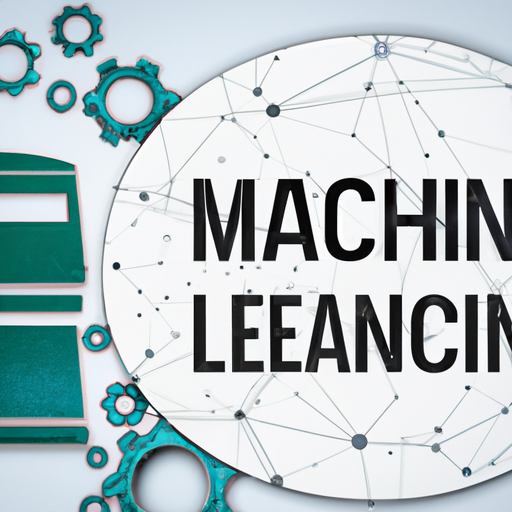The Fascinating World Of The Machine Learning Machine
Machine learning machines are transforming how we interact with technology and paving the way for incredible advancements across various sectors.
As the backbone of artificial intelligence, these machines enable systems to learn from data, identify patterns, and make decisions with minimal human intervention.
Let’s delve into the fascinating world of the machine learning machine and uncover its magic.
What Is A Machine Learning Machine?
A machine learning machine refers to an automated system designed to process vast amounts of data, recognize patterns, and make informed decisions based on algorithmic models.
Imagine a device that constantly improves its performance by learning from past experiences—this is essentially what a machine learning machine does.
It employs various ai programming languages like Python, R, and Java to build sophisticated models for predictive analysis.
These models help in everything from spam email detection to advanced medical diagnostics.
How Does A Machine Learning Machine Work?
At its core, a machine learning machine utilizes algorithms to analyze data sets.
These algorithms can be categorized broadly into supervised learning, unsupervised learning, and reinforcement learning.
Supervised Learning: In this approach, the machine is trained using labeled data. Think of it as teaching a child using flashcards of objects with their names written on them. The system learns by example and can predict outcomes based on new inputs it hasn’t seen before.
Unsupervised Learning: Here, the machine identifies patterns within unlabelled data. It’s akin to giving a child a puzzle without showing them the picture on the box—they figure out how pieces fit together through trial and error.
Reinforcement Learning: This involves training models through reward-based mechanisms. Imagine teaching your dog new tricks by rewarding it with treats whenever it performs well. Machines learn optimal actions by interacting with their environment in this manner.
These methodologies enable machines to create predictive models that improve over time without human intervention.
The Role Of Data In Machine Learning Machines
Data is the lifeblood of any machine learning operation.
The more quality data you feed into these systems, the more accurate their predictions will be.
For instance, in artificial intelligence projects, enormous datasets are processed to train sophisticated algorithms capable of making high-stakes decisions—from autonomous driving systems to financial market analysis tools.
However, not all data is created equal; it’s essential to clean and preprocess datasets meticulously before feeding them into your model to avoid inaccurate results or ‘garbage in-garbage out’ scenarios.
Real-Life Examples And Applications
Machine learning machines have permeated numerous industries:
Healthcare: Predictive analytics powered by ML can forecast disease outbreaks or assist doctors in diagnosing ailments based on patient history combined with real-time symptom tracking.
Finance: Investment firms use ML algorithms for high-frequency trading strategies that execute trades within milliseconds based on market trends identified through historical data analysis.
Retail: E-commerce giants like Amazon leverage recommendation engines built on ML models suggesting products tailored specifically for individual user preferences.
These examples highlight just how ubiquitous these intelligent systems have become—and they’re only growing smarter!
The Importance Of Advanced Encryption For Security
As we rely more heavily on machines handling sensitive information—from personal health records stored in cloud databases accessed via smartphones running predictive text apps—it becomes crucially important that security measures keep pace with innovation levels achieved via computational prowess seen today (exemplified notably perhaps best within realms such as quantum cryptography).
By utilizing techniques like advanced encryption standard protocols alongside multifactor authentication frameworks ensures robustness against potential breaches thereby safeguarding integrity & confidentiality paramount especially considering exponential growth seen within IoT ecosystem further expanding attack surface areas exponentially over time!
The Challenges And Future Prospects
Despite immense potential benefits stemming directly attributable thanks due largely part concerted efforts ongoing research development domains collectively comprising umbrella term ‘AI,’ several challenges still need addressing before achieving widespread adoption realized fully across board:
*Data Privacy Concerns: Managing vast amounts personal identifiable information responsibly remains significant hurdle needing overcome ensuring compliance existing regulations (e.G., GDPR) while maintaining user trust essential continued growth success long-term prospects involved stakeholders alike!
*Algorithmic Biases: Ensuring fairness transparency underlying decision-making processes crucial avoiding perpetuating existing societal inequalities inadvertently introduced due inherent biases present within training datasets utilized inherently complex nature problem-solving methods employed themselves inherently biased towards optimizing certain criteria potentially excluding marginalized groups unintentionally thereby exacerbating disparities rather mitigating them effectively ultimately desired goal end-users benefiting fullest extent possible ideally envisioned originally inception stages conceptualization phase itself ideally speaking course naturally so forth!

